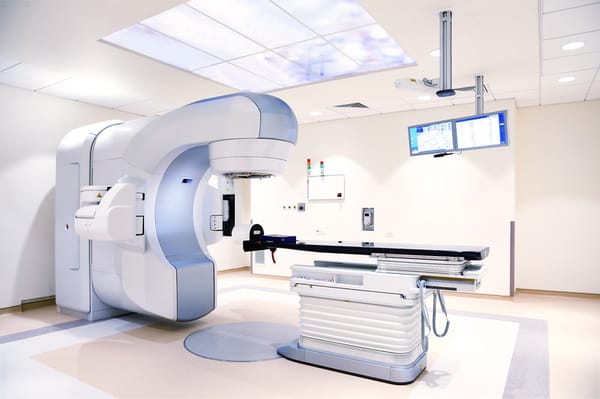
A recent Pennsylvania federal district court decision, Rosewood Cancer Care, Inc. v. Travelers Indem. Co., 2016 U.S. Dist. LEXIS 133075 (W.D. Pa. Sept. 28, 2016), demonstrates how failing to understand the nature of the insured property can lead to coverage litigation.
In Rosewood, the court had to determine if a medical device bolted into a building was business personal property or a "permanent" part of the building. The difference between the two designations influenced almost half-a-million dollars in coverage.
Background
The dispute began after a pipe burst in a facility occupied by Jefferson Radiation Oncology Center, causing water damage to a Varian 2100c Linear Accelerator. Commonly used in cancer treatment, a linear accelerator (or "Linac") directs radiation at tumors wherever they may be located on a patient's body. Neither Rosewood nor Jefferson owned the building.
Rosewood Cancer Care, Jefferson's general partner, had installed the Linac following the failure of a similar model in 2008. Removal of the previous device and installation of the new one took a specialized team of workers—including a medical physicist—2 months and necessitated the use of heavy equipment such as jackhammers and welding torches. The Linac was connected to the building's water and electricity lines, secured in place with bolts penetrating a foot of concrete, and housed in what Jefferson referred to as the "vault": a room constructed specifically to protect against radiation emitted by the device.
After assessing the damage, Rosewood and Jefferson sent a notice of loss to their insurer, Travelers Indemnity Company. The parties disagreed about the nature of the Linac. If the device was determined to be a permanent part of the structure, it was covered for up to $559,620. If, on the other hand, the Linac was "business personal property" because it was a "fixture" or piece of "machinery or equipment," it was insured for no more than $103,000.
The insurance company decided the Linac was business personal property because it was a fixture brought onto the premises for a particular trade—radiology. Travelers also noted that Jefferson and Rosewood's Linac removal in 2008 established that the Linac was not permanently attached to the building. Travelers also pointed out that the plaintiffs owned the device but not the building.
The plaintiffs insisted the Linac should be covered as machinery and equipment permanently attached to the building. They argued that, because of the equipment and procedures involved, removal of the device would cause damage to the underlying structure of the building. It was, therefore, permanently attached. Moreover, in light of the "vault," plaintiffs asserted that the building was constructed to accommodate a Linac, and, therefore, the device serviced the building's "highest end use."
The court found merit in both arguments and both interpretations of the policy. In keeping with established Pennsylvania law, where "[a]mbiguous provisions in an insurance policy must be construed against the insurer and in favor of the insured," the court granted partial summary judgment to the plaintiffs.
Lessons Learned
This case underscores the importance of consistent, thorough communication about the property covered in an insurance policy. A policy cannot anticipate every possible issue, and clear dialogue among the policyholder, broker, and underwriter is frequently necessary to make sure proper coverage is obtained.
Both parties could have gained a better understanding of exactly what was being insured before the claim was brought by examining the property together. In circumstances involving highly specialized machinery, brokers would be wise to ask the insured the questions necessary to determine the nature of the property. Specialized equipment necessary to the business can be specifically scheduled to eliminate any questions about what it is. Visits by insurance company underwriters can also help alleviate problems and develop common ground between the parties. However it is accomplished, everyone needs to be on the same page about the nature of the property insured.
Opinions expressed in Expert Commentary articles are those of the author and are not necessarily held by the author's employer or IRMI. Expert Commentary articles and other IRMI Online content do not purport to provide legal, accounting, or other professional advice or opinion. If such advice is needed, consult with your attorney, accountant, or other qualified adviser.

